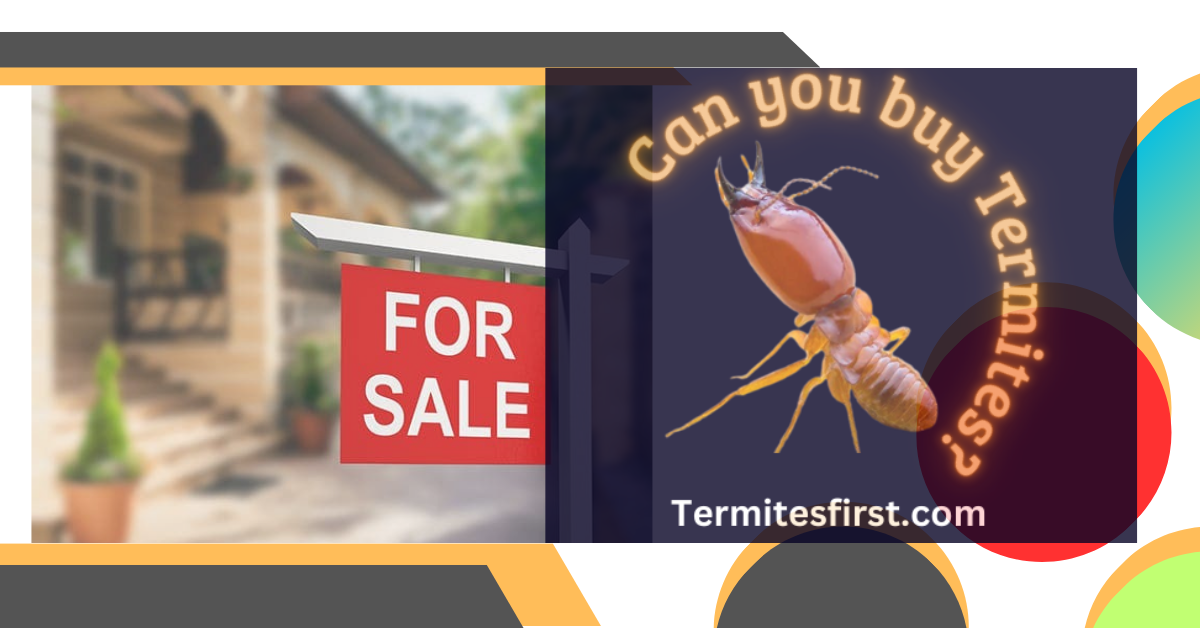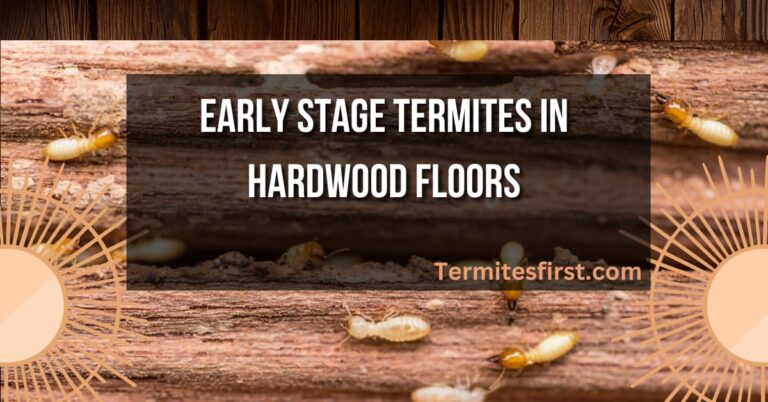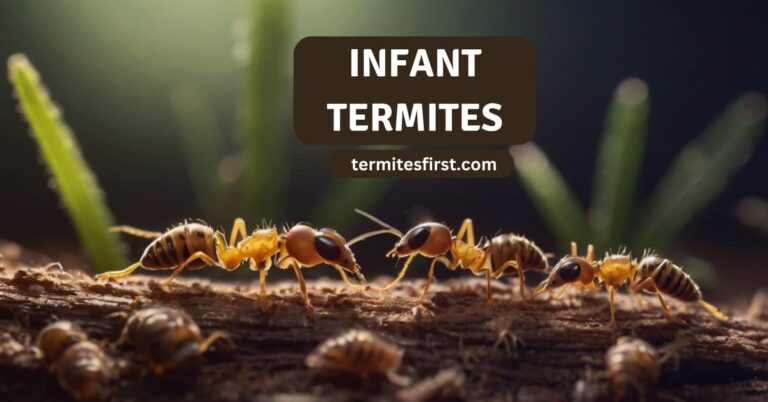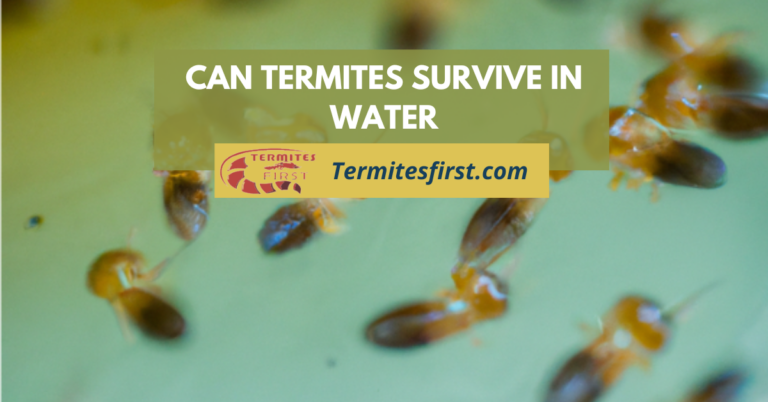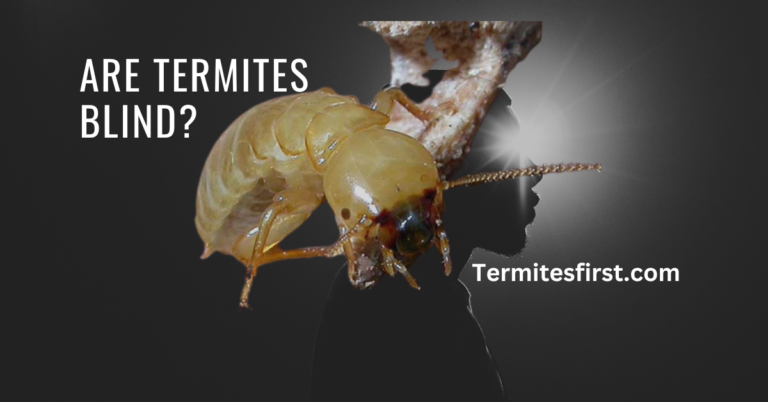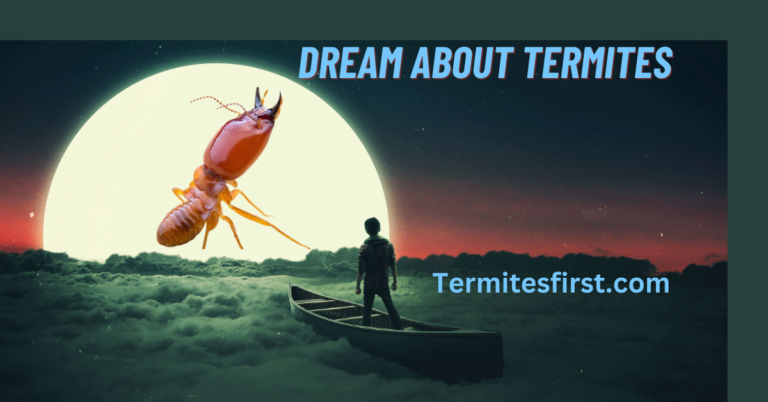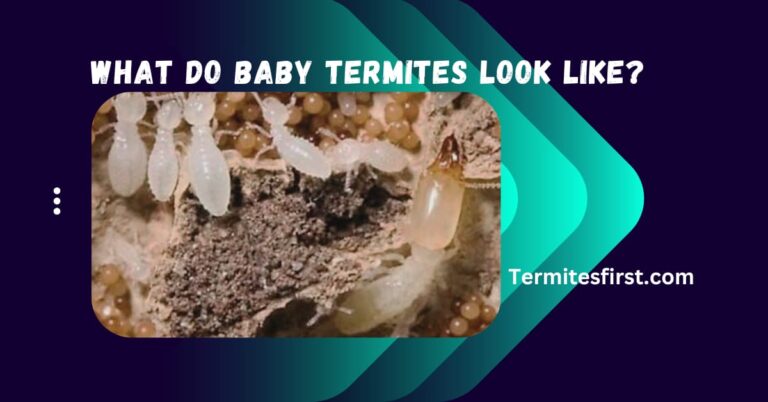Can You Buy Termites? Best Sources for Workers & Soldiers
Did you know that termites cause over $5 billion in property damage each year in the U.S.? I find it fascinating how these tiny creatures can wreak such havoc. If you’re wondering, “can you buy termites?” for a reason, you’re not alone. Many people are curious about the idea of purchasing these pests for various reasons, like research or pest control.
In this post, I’ll dive into the ins and outs of buying termites. I’ll explore the legality, the risks, and what to consider before making any decisions. Understanding these factors can help you make informed choices. Whether you’re a curious homeowner or a budding entomologist, this information could be valuable to you. Let’s uncover the truth behind buying termites.
Understanding Termite Types
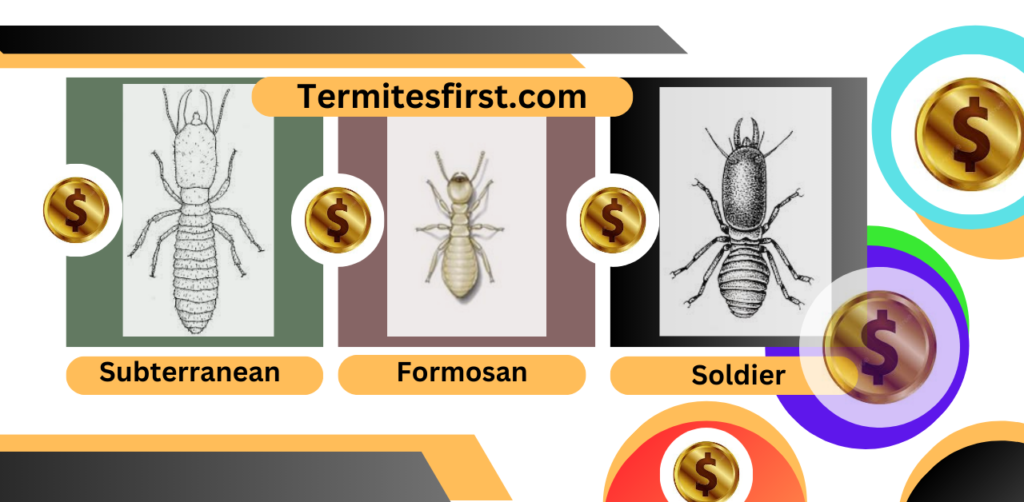
Subterranean Termites
Subterranean termites are the most common type found in the USA. They live underground and build extensive tunnel systems. These tunnels allow them to access food sources, mainly wood. I once learned that these termites can cause significant damage to homes if left unchecked. Their colonies can contain millions of individuals.
These termites prefer moist environments. They often invade structures through cracks in foundations or wooden structures. Their presence, especially subterranean termites, is often indicated by mud tubes along walls or foundations.
Drywood Termites
Drywood termites differ significantly from subterranean types. They nest in dry wood, such as furniture or structural beams. Unlike subterranean termites, they do not require contact with soil. This species can survive without moisture from the ground.
I have seen cases where homeowners mistakenly believe they have a different pest problem. The signs of drywood termite infestations include discarded wings and small fecal pellets. Recognizing these signs early can prevent extensive damage.
Dampwood Termites
Dampwood termites also have unique nesting preferences. They thrive in decaying wood with high moisture content. This includes fallen trees and damp logs. Their presence indicates moisture issues in buildings or landscapes.
These termites are less likely to infest homes compared to subterranean and drywood species. However, they can still cause damage if conditions are favorable. I remember reading about how important it is to address any water leaks to prevent these pests.
Global Distribution
Termites exist worldwide, with over 2,600 species identified globally. They play crucial ecological roles, such as decomposing organic matter and enriching soil quality. In tropical regions, they contribute significantly to nutrient cycling.
In contrast, some species are invasive outside their native habitats. For example, Formosan termites have spread beyond their original range and cause severe damage in places like Hawaii and southern states of the USA.
Understanding these various types of termites helps homeowners identify potential threats. Knowing their habits and preferences aids in prevention strategies and treatment options.
Roles of Soldiers and Workers
Soldier Termites
Soldier termites play a crucial role in defending the colony. These termites possess powerful mandibles. They use these to protect against predators like ants. Their primary function is to guard the nest and foraging workers. Without soldiers, colonies would face significant threats from other insects.
I find it fascinating how soldier termites work tirelessly to defend their home. They are always alert, ready to fight off any intruder. This dedication highlights the importance of teamwork in a termite colony.
Worker Termites
Worker termites are essential for the maintenance of the colony. They handle various tasks, such as foraging for food and caring for the young. Workers also build and repair tunnels within their habitat. This ensures that the colony remains safe and functional.
These workers, termites, consume wood and other organic materials, which they convert into nutrients. They break down cellulose found in farm materials, allowing the colony to thrive. Their efforts directly support the growth of the entire group.
Social Structure
The social structure of a termite colony is complex yet well-organized. Each caste has specific roles that contribute to survival. Soldiers, workers, and reproductive termites all interact closely. This division of labor allows colonies to function efficiently.
Colony dynamics change depending on environmental conditions. For example, during dry periods, worker termites may focus more on food storage. In contrast, during times of threat, soldier numbers might increase as defense becomes a priority.
This intricate balance fascinates me. The cooperation among different castes ensures that the colony can adapt to challenges. Each member’s contribution is vital to overall success.
Buying Reproductive Termites

Breeding Purposes
People may want to buy reproductive termites for several reasons. One main reason is for breeding. Breeders often seek to establish colonies for research or educational purposes. Understanding termite behavior can help in pest control strategies.
I find it fascinating how these insects play a crucial role in ecosystems. They break down cellulose, aiding in nutrient cycling. Their ability to form large colonies makes them interesting subjects for study.
Care and Handling
Reproductive termites require different care compared to worker termites. They need specific humidity levels and temperature ranges to thrive. A controlled environment mimics their natural habitat, which is essential for successful breeding.
Worker termites focus on colony maintenance and food gathering. In contrast, reproductive termites are responsible for reproduction and establishing new colonies. This distinction affects how they should be handled and housed.
Risks of Introduction
Introducing reproductive termites into new environments carries potential risks. They can become pests if not managed correctly. The establishment of a new colony could lead to infestations, damaging structures and gardens.
Moist traps are effective tools for monitoring termite presence. However, using reproductive termites without proper planning can exacerbate pest issues. It’s vital to assess local ecosystems before introducing any species.
I’ve seen firsthand how quickly an uncontrolled termite population can spread. It’s essential to consider the long-term implications before proceeding with such actions.
Legal Considerations
Restrictions
Many states in the USA impose strict restrictions on the purchase and ownership of termites. These regulations aim to protect local ecosystems from invasive species. For example, California prohibits the sale of certain termite species without a permit. I find it crucial to check local laws before considering any transaction.
Some states mandate proper documentation when purchasing termites, which must include details on their source and intended purpose. Failure to comply with these regulations can result in significant financial penalties or legal consequences.
Reason
The reason for these regulations often stems from ecological concerns. Non-native termite species can disrupt local habitats. They may outcompete native species for resources, leading to ecological imbalance. In my experience, understanding these implications helps in making informed decisions about pest management.
In some cases, introducing non-native termites can also lead to structural damage. They can infest homes, such as adobe houses, causing significant repair costs. Awareness of these risks is essential before purchasing termites.
Permits
Legal consequences arise from buying or selling termites without proper permits. Many jurisdictions classify termites as pests under agricultural laws. Selling them without a license can result in criminal charges.
Obtaining a permit usually involves an application process. This may include background checks and proof of knowledge regarding termite handling. I recommend consulting with local agricultural departments if you’re unsure about the requirements.
Refunds and Returns
Policies regarding refunds and returns for purchased termites vary widely. Some sellers may not allow returns due to the nature of the product. Once acquired, live insects are often considered non-returnable items.
Understanding the seller’s return policy is vital before making a purchase. Some companies offer guarantees but require specific conditions to be met for a refund. Always read the fine print to avoid surprises later.
Date of Purchase
The date of purchase can affect warranty or guarantee claims on termites. Many companies specify time limits within which claims must be made. Keeping track of your purchase date ensures you don’t miss out on potential refunds or exchanges.
In my opinion, maintaining accurate records is beneficial when dealing with live products like termites. This practice helps in resolving disputes if issues arise later.
Where to Purchase Termites
Online Platforms
Many online platforms offer termites for sale. Websites like Amazon or eBay may have various insect suppliers. Specialized sites such as Bugs In Cyberspace focus on live insects, including termites. These platforms provide options for different species, catering to specific needs.
I often check these sites for availability. Prices can vary widely based on the species and quantity. Some sellers even provide care instructions with their products.
Specialty Insect Suppliers
Local specialty insect suppliers are another option. Many cities have shops dedicated to exotic pets or insects. These stores often stock live termites and can offer advice on care and habitat.
Visiting a local store allows for direct interaction with knowledgeable staff. They can answer questions and help select the right type of termite for your needs. I find it useful to discuss my project with someone who understands the insects deeply.
Universities and Research Institutions
Local universities or research institutions may have termite colonies available for educational purposes. Many biology departments maintain insect collections for study. They may allow individuals to purchase or obtain termites for research or educational projects.
Contacting university extension services can yield helpful information. They might direct you to resources or programs that assist in acquiring termites legally and ethically.
Community Forums
Community forums and groups are invaluable resources for purchasing termites. Websites like Reddit host numerous threads discussing breeding and buying insects. Joining these communities allows access to shared experiences and recommendations from fellow enthusiasts.
These forums often feature members who breed termites at home. They may sell surplus colonies or provide guidance on where to buy them. I appreciate the camaraderie found in these groups; sharing knowledge makes the process smoother.
Local Breeders
Specializing in insects, particularly termites, are local breeders who can be found through online directories. Buying from a breeder directly guarantees the quality of the specimens as well as tailored guidance for their care.
Reaching out to these breeders can also help build connections within the community. Many are passionate about entomology and enjoy sharing their knowledge.
Termite Description and Specifications
Physical Characteristics
Termites vary widely in appearance. They can be small or large, depending on the species. Subterranean termites like Reticulitermes flavipes are typically 1/8 to 1/2 inch long. Their bodies are often a creamy white or light brown color. In contrast, drywood termites may appear darker, with some reaching up to 3/8 inch.
I remember spotting small termites in my backyard once. Their pale bodies blended well with the soil, making them hard to see. Understanding these differences helps in identifying termite species effectively.
Size and Color
Size and color can indicate the type of termite present. Small termites, such as nymphs, are often lighter and less defined than their adult counterparts. Large termites have distinct physical traits, like larger mandibles and darker exoskeletons.
For example, Zootermopsis, known as dampwood termites, can grow up to an inch long. Their size makes them easier to spot compared to subtropical termites which remain smaller. Noticeable color variations also exist; for instance, many subterranean termites have a yellowish hue.
Behavior Patterns
Behavior varies among termite species. Active termites tend to forage for food at night. They build intricate tunnels that lead to food sources. Some species form large colonies that can number in the millions.
Signs of infestation include mud tubes along walls or foundation areas. These tubes serve as protective pathways for termites moving between their nests and food sources. I’ve seen these tubes firsthand in older homes, indicating a serious problem.
Common Infestation Signs
Homeowners should look out for several signs of termite activity. Droppings, often resembling sawdust, can indicate a nearby colony. Swarmers, or winged termites, may appear during warmer months as they search for new nesting sites.
Another sign is damaged wood that sounds hollow when tapped. This damage indicates that active termites have been consuming the wood from the inside out. Observing these signs early on can prevent severe structural damage.
Termite Nests and Colonies
Termite nests vary by species but generally consist of intricate structures built from soil, wood, and saliva. A termite colony thrives within these nests, which provide protection and resources for the queen and workers.
Understanding where termites nest helps in controlling infestations. Subterranean termites create their colonies underground while drywood termites prefer to live within the wood itself.
Care and Handling Instructions
Environmental Conditions
Termites require specific environmental conditions to thrive. They prefer a warm, humid climate. The ideal temperature is between 70°F and 90°F. Humidity levels should be kept around 50% to 70%.
I learned that maintaining these conditions can be challenging. A simple humidity gauge helps monitor levels effectively. If the environment becomes too dry, termites may die or become inactive.
Safe Handling
Handling termites requires care. Start by wearing gloves to prevent bites and contamination. Use a small container with air holes for transport. This ensures they have enough oxygen during transit.
- Gently scoop termites using a soft brush.
- Place them in the container without overcrowding.
- Seal the container securely to avoid escapes.
- Keep the container in a shaded area while moving.
I always ensure that I handle them gently. Excessive movement can stress them out, which might lead to health issues.
Cleanliness and Contamination Prevention
Maintaining cleanliness is crucial in termite habitats. Remove any uneaten food or waste daily. This prevents mold growth and keeps the environment healthy.
To further prevent contamination, use separate tools for handling different termite colonies. This practice reduces the risk of spreading diseases between colonies.
Following these guidelines helps ensure a healthy environment for your termites. It also enhances their longevity and productivity.
Conclusion:
I’ve covered a lot about buying termites. From understanding the different types to knowing where and how to purchase them, I’ve aimed to equip you with the essential knowledge. It’s crucial to remember the legalities and care instructions that come with owning these fascinating insects.
If you’re considering adding termites to your collection or research, make informed choices. Always prioritize ethical sourcing and proper handling. Dive deeper into this subject, explore reputable suppliers, and ensure you’re ready for the responsibility that comes with them. Let’s keep learning together!
Related:- Termite Droppings but No Termites
FAQ’s:-
Yes, you can purchase termites for educational or research purposes. However, using them for pest control is not recommended. Professional pest control services are more effective and safer.
Termites can be purchased from specialized insect suppliers, pet stores, or online retailers that focus on live insects for educational use. Always check local regulations before buying.
Yes, some regions have laws regulating the sale and possession of termites due to their potential as pests. Always verify local laws before purchasing.
You can find various termite species, including drywood and subterranean termites. Ensure you choose the right type based on your intended purpose, like research or education.
Keep termites in a controlled environment with appropriate humidity and temperature. Use proper housing materials to mimic their natural habitat and ensure they have access to food sources.
Releasing purchased termites into your garden is not advisable. They can become pests and damage your property or surrounding ecosystems. Always dispose of them responsibly.

